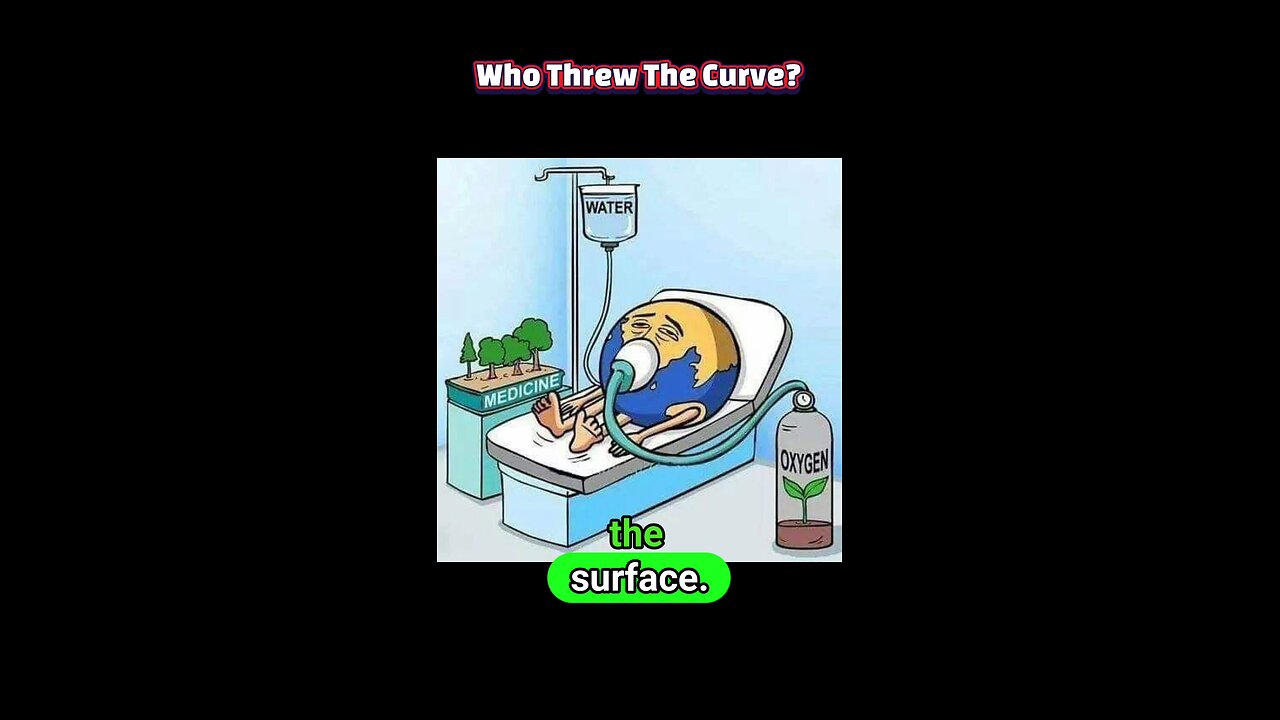Premium Only Content

NASA’s Oxygen Warning: Earth’s Countdown Begins
#NASAWarning #OxygenCrisis #EarthCountdown #ClimateScience #FutureOfEarth #SpaceNews #ScienceAlert #PlanetaryThreat #Astrobiology #EndOfOxygen
Humanity faces a long-term atmospheric threat as scientists warn that Earth’s oxygen-rich atmosphere is not permanent and may begin a permanent decline long before the planet’s final demise, a development highlighted in recent reporting on a study involving NASA researchers. The central claim is stark: as conditions change over geological time, the balance that has sustained complex life could unravel, making this a scientific concern rather than a distant myth.
The physical mechanism behind the warning is straightforward and rooted in stellar and planetary chemistry. As the Sun gradually becomes more luminous, Earth will warm enough that atmospheric carbon dioxide will break down, depriving photosynthetic life of the CO2 it needs to produce oxygen; without persistent photosynthesis, net oxygen production falls and atmospheric oxygen concentrations decline. This chain of processes links solar evolution to terrestrial habitability and implies that planetary life support depends on a delicate, time-limited set of geochemical cycles.
The projected consequences for ecosystems and human society are profound and cascading. Reduced oxygen would erode the protective ozone layer, increase surface ultraviolet radiation, and shift atmospheric chemistry toward high methane and low CO2 regimes that favor only anaerobic organisms, effectively ending the era of complex, multicellular life on the surface. These shifts would not only change which species can survive but would transform climate feedbacks, nutrient cycles, and the very transparency of the sky to life-sustaining sunlight.
Timing estimates carry large uncertainties but emphasize urgency in scientific understanding rather than immediate alarm. Some models place a dramatic drop in oxygen on timescales of roughly a billion years while suggesting the irreversible decline could begin much earlier, perhaps within tens of thousands of years; these ranges reflect differences in model assumptions about biosphere resilience, carbon cycling, and planetary feedbacks. The uncertainty means the primary scientific task is refining models and monitoring Earth system indicators that would signal long-term shifts in photosynthetic productivity and atmospheric chemistry.
The study’s message reframes planetary stewardship: Earth’s habitability is finite and contingent, shaped by astrophysical forces and fragile biospheric processes. The immediate policy implication is investment in Earth observation, fundamental research on carbon and oxygen cycles, and preparing institutions to interpret long-term trends rather than reacting only to short-term crises. Understanding these deep-time risks strengthens our science, sharpens global monitoring priorities, and deepens the urgency of preserving the biosphere that still sustains complex life.
-
 LIVE
LIVE
vivafrei
2 hours agoAre they Killing the Ostriches? Roger Ver Strikes a Deal! Tommy Robinson, Tom Homan & MORE!
13,488 watching -
 LIVE
LIVE
Right Side Broadcasting Network
3 hours agoLIVE: President Trump Participates in the Charlie Kirk Medal of Freedom Ceremony - 10/14/25
5,769 watching -
 UPCOMING
UPCOMING
Dr. Drew
2 hours agoThe Quartering: Letitia James Just Found Out "No One Is Above The Law" In Spectacular Display Of FAFO w/ Viva Frei – Ask Dr. Drew
1.51K -
 1:36:51
1:36:51
The Quartering
2 hours agoThe End Of Trans Madness, Alex Jones Loses Final Plea, Rock Bottom For Star Trek & More
83.7K22 -
 36:53
36:53
Stephen Gardner
2 hours ago🔥LEAKED! Trump's Secret ANTIFA Takedown Plan EXPOSED!!
4.09K4 -
 1:20:21
1:20:21
The Confessionals
3 hours agoInside the Invisible War (Demons Don't Fight Fair)
2491 -
 1:07:45
1:07:45
The White House
3 hours agoPresident Trump Participates in a Bilateral Lunch with the President of the Argentine Republic
24.6K13 -
 2:13:35
2:13:35
Barry Cunningham
3 hours agoBREAKING NEWS: PRESIDENT TRUMP AND PRESIDENT OF ARGENTINA JAVIER MILEI MEET
17.6K4 -
 5:22
5:22
Michael Heaver
4 hours agoFarage Issues URGENT Warning To Britain
4.13K2 -
 1:22:01
1:22:01
Sean Unpaved
5 hours agoMNF Madness, CFB Week 7 Rewind, & MLB's ALCS & NLCS Playoff Fire!
26.7K